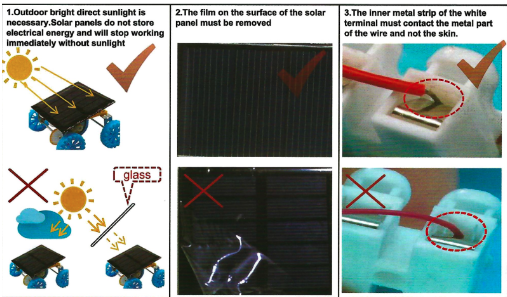STEAM Ahead - Clean Energy STEAM Kits
STEAM Kit Introduction:
The STEAM Ahead Clean Energy STEAM Kit is designed to introduce students to two renewable forms of energy - solar and wind - through various hands-on activities. Solar and Wind energy can help offset greenhouse gas emissions and thus reduce the impact of climate change.
Climate change is the long-term shift in the Earth’s temperatures and weather patterns. Human activities are driving climate change because of the emission of greenhouse gas which are caused by the burning of fossil fuels like natural gas, coal and oil for energy use. These fossil fuels release mainly carbon dioxide (CO2) that gets trapped in the atmosphere, causing the Earth to heat up. In fact, 2023 was the hottest year on record.
Climate change has an extreme impact on our everyday lives. It can cause warmer temperatures, more severe storms, increased drought, extinction of animals, rising sea levels, and more. Therefore it's important for people to take action to help reduce the impact of climate change.
Wind Power:
Wind Power is a form of renewable energy that harnesses the power of wind to generate electricity. In fact, since 2019 wind power is the United States largest source of renewable energy and supplies more than 10% of the country’s total electricity. In Massachusetts, there are 21 utility-scale wind power facilities and in 2024, the second largest offshore wind farm in the U.S opened off the coast of Martha’s Vineyard.
How Wind Power Works:
Wind Turbines use wind to create electricity. Wind turbines are consist of three critical parts:
Rotor Blades - The sails of the system that act as barriers to the wind. When the blades move due to the wind, some of the energy is transferred to the rotor.
Shaft - The shaft is connected to the rotor and spins when the rotor spins. Energy from the rotor is transferred to the shaft which enters an electrical generator.
Generator - The generator converts wind power to electrical energy by using electromagnetic induction
When wind blows across the turbine blades, the blades capture wind energy and start moving. This causes a shaft that leads from the hub of the rotor to a generator to spin which turns rotational energy into electricity. This translation of aerodynamic forces to rotation of a generator creates electricity.
To explore how a wind turbine works, check out this demonstration. You can also explore additional resources on WindExchange.
Solar Power:
Solar Power is a form of renewable energy that converts energy from the sun into power that can be used for electrical power (electricity) or thermal power (heat). It is the most abundant renewable energy source. According to the Office of Energy Efficiency & Renewable Energy, the amount of sunlight that hits the earth’s surface in an hour and a half is enough to handle the entire world’s energy consumption for a year.
How Solar Power Works:
Solar Power is based on solar radiation which is light that is emitted by the sun. This is also known as electromagnetic radiation. There are two main types of technology used to capture solar energy and convert it into power:
Photovoltaics (PV) - PV technology is used in Solar panels. When the sun shines onto the solar panel, energy from the sunlight is absorbed by the PV cells in the panel. This energy creates electrical charges which cause electricity to flow.
Concentrating solar-thermal Power (CSP) - CSP systems use mirrors to reflect and concentrate sunlight onto receivers that collect solar energy and convert it to heat, which can then be used to produce electricity or stored for later use.
Your STEAM Kit will focus on Photovoltaics which is in solar panels. Did you know that Massachusetts is ranked 10th in the nation in the amount of electricity generated from solar photovoltaic (PV) panels? Solar panels use silicon to generate electricity. The electricity is covered from direct current (DC) to alternating current (AC) so it can be used in your home and on the electric grid. The main difference between DC and AC is the direction in which the electrons flow. In DC, electrons flow in a single direction whereas in AC, electrons switch their flow direction. Homes and buildings use AC while some appliances and consumer electronics use DC.
To learn more about how solar panels work, watch this short video from MassCEC. You can also visit the Office of Energy Efficiency and Renewable Energy website.









